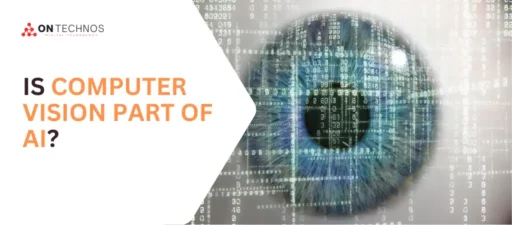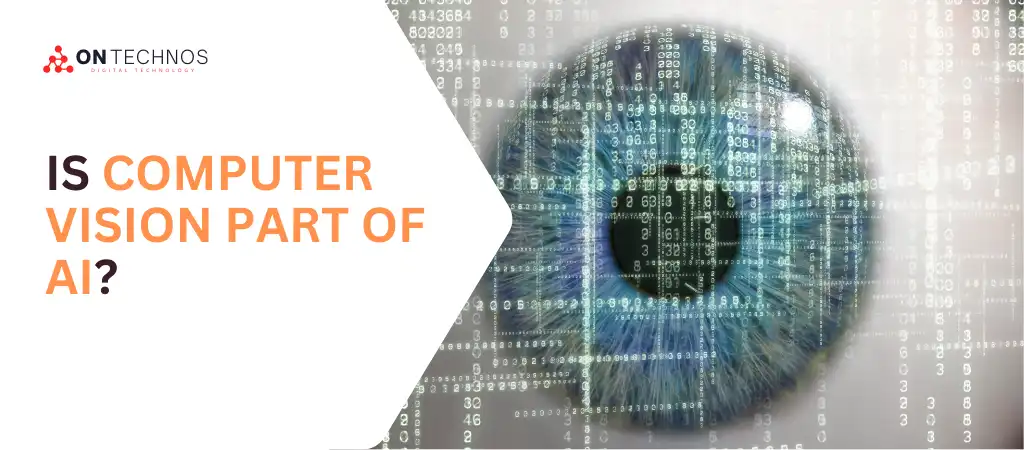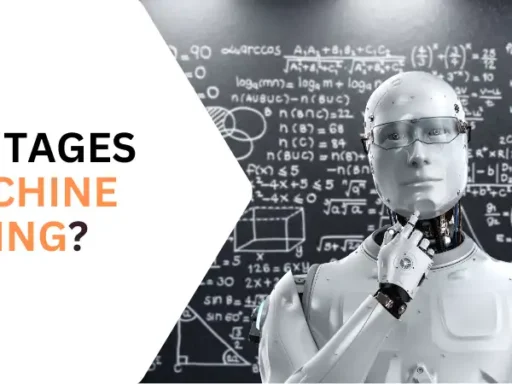In recent years, the intersection of artificial intelligence (AI) and computer vision has garnered immense attention across various industries. The rapid advancements in technology have led to the development of sophisticated systems capable of interpreting and understanding visual information from the world. Is Computer Vision Part Of Ai?
This comprehensive guide explores the relationship between computer vision and AI, delving into its significance, methodologies, applications, challenges, and future prospects.
AI and Computer Vision
What is Artificial Intelligence?
Artificial Intelligence is a branch of computer science focused on creating systems that can perform tasks that typically require human intelligence.
These tasks include reasoning, learning, problem-solving, perception, language understanding, and decision-making. AI encompasses various subfields, including machine learning, natural language processing, and robotics.
What is Computer Vision?
Computer vision, on the other hand, is a field within AI that trains computers to interpret and understand the visual world. It involves acquiring, processing, and analyzing images and videos to extract meaningful information. The objective is to enable machines to perceive their environment similarly to how humans do, enabling them to make decisions based on visual inputs.
The Relationship Between AI and Computer Vision
Given that computer vision involves intelligent processes to interpret visual data, it is fundamentally a part of AI. In essence, while AI can encompass a broad range of technologies and methodologies, computer vision specifically focuses on visual perception. Thus, all computer vision systems can be classified under the broader umbrella of AI.
The Significance of Computer Vision in AI
Enhanced Machine Learning Capabilities
Computer vision algorithms leverage machine learning techniques to improve their accuracy and effectiveness.
By training on large datasets, these systems can learn to recognize patterns, identify objects, and make predictions based on visual inputs. This integration enhances the overall capabilities of AI systems, enabling them to handle complex visual tasks.
Automation of Visual Tasks
One of the most significant benefits of incorporating computer vision into AI is the automation of visual tasks that traditionally required human intervention. This includes activities such as image classification, facial recognition, and anomaly detection. Automating these tasks leads to increased efficiency, accuracy, and cost savings across various sectors.
Real-World Applications
Computer vision is not just a theoretical concept; it has practical applications across numerous industries. The ability of AI to process and analyze visual information has led to transformative changes in fields such as healthcare, automotive, retail, and security.
Methodologies in Computer Vision
Image Processing Techniques
Computer vision begins with image processing techniques that enhance the quality of visual data. These techniques include filtering, edge detection, and image segmentation. By improving the clarity and structure of images, these methods lay the groundwork for more advanced analysis.
Feature Extraction and Representation
Feature extraction is a critical step in computer vision, where relevant information from images is identified and extracted. Techniques such as Scale-Invariant Feature Transform (SIFT) and Histogram of Oriented Gradients (HOG) are commonly used to represent visual features, enabling machines to recognize and differentiate objects effectively.
Deep Learning and Neural Networks
The advent of deep learning has revolutionized computer vision. Convolutional Neural Networks (CNNs) have become the backbone of modern computer vision systems, allowing for hierarchical feature extraction from images.
CNNs automatically learn from data, making them particularly powerful for tasks such as object detection and image classification.
Applications of Computer Vision in AI
Healthcare
In healthcare, computer vision is used for medical imaging analysis, aiding in the early diagnosis of diseases. Systems can analyze X-rays, MRIs, and CT scans to identify abnormalities, thus assisting healthcare professionals in making informed decisions.
Automotive Industry
The automotive sector utilizes computer vision for developing autonomous vehicles. Advanced driver-assistance systems (ADAS) rely on real-time visual data to detect obstacles, lane markings, and traffic signals, enhancing safety and navigation.
Retail
Retailers employ computer vision for inventory management, customer behavior analysis, and checkout automation. Systems can monitor stock levels, analyze foot traffic, and even facilitate cashier-less shopping experiences.
Security and Surveillance
Computer vision enhances security systems by enabling facial recognition, intrusion detection, and behavior analysis. These applications allow for proactive security measures and efficient monitoring of public spaces.
Challenges in Computer Vision
Data Quality and Availability
The effectiveness of computer vision systems heavily depends on the quality and quantity of training data. Insufficient or biased datasets can lead to inaccurate predictions and poor performance. Ensuring diversity and representativeness in training data is crucial for building robust models.
Computational Resources
Deep learning models, particularly those used in computer vision, require significant computational resources. Training complex models can be time-consuming and expensive, necessitating access to powerful hardware and cloud-based solutions.
Interpretability
Interpreting the decisions made by computer vision systems poses challenges. Understanding how these models arrive at their conclusions is essential for trust and accountability, especially in critical applications such as healthcare and security.
Future Prospects of Computer Vision in AI
Continued Advancements in Deep Learning
As research in deep learning progresses, we can expect more sophisticated algorithms capable of tackling increasingly complex visual tasks. These advancements will likely lead to improved accuracy and efficiency in computer vision applications.
Integration with Other AI Fields
The future of computer vision lies in its integration with other AI domains, such as natural language processing and robotics. Combining these fields can result in more comprehensive systems capable of understanding and interacting with the world in multifaceted ways.
Ethical Considerations
As computer vision systems become more prevalent, ethical considerations surrounding privacy, surveillance, and data security will become increasingly important. Developing frameworks to ensure responsible use of these technologies will be crucial in addressing public concerns.
You Might Be Interested In
- What Is An Epoch Machine Learning?
- What Is An Example Of a Neural Network?
- What Are The Benefits Of Robotic Surgery
- Which Algorithm Is Better Than Genetic Algorithm?
- What Is A 3 Layer Neural Network?
Conclusion
In summary, computer vision is indeed a vital part of AI, serving as a powerful tool that enhances the ability of machines to interpret and interact with visual information. Its methodologies and applications span across various industries, driving innovation and efficiency.
However, challenges related to data quality, computational demands, and ethical considerations remain. As we look to the future, continued advancements in technology and a commitment to responsible practices will be essential for harnessing the full potential of computer vision within the AI landscape.
This guide has explored the intricate relationship between computer vision and AI, emphasizing its significance and the impact it has on modern society.
Understanding this connection is crucial for anyone interested in the evolving fields of artificial intelligence and computer vision.
FAQs about is computer vision part of ai
What is the role of machine learning in computer vision?
Machine learning plays a crucial role in computer vision by enabling systems to learn from data rather than relying solely on hard-coded rules. Through the use of algorithms, particularly deep learning techniques such as Convolutional Neural Networks (CNNs), computer vision models can identify patterns and features in images and videos.
These algorithms analyze large datasets, automatically learning to recognize objects, faces, and other visual elements based on examples rather than explicit programming. This ability to generalize from data makes machine learning essential for tasks such as image classification, object detection, and even semantic segmentation, where the model assigns labels to every pixel in an image.
Moreover, machine learning enhances the adaptability of computer vision systems. As new data becomes available, these models can be retrained or fine-tuned, improving their performance over time.
This capability is particularly beneficial in dynamic environments where visual inputs may vary widely. For instance, a computer vision system used in retail may need to adapt to different lighting conditions, product variations, or customer behaviors. By leveraging machine learning, these systems can continuously improve and provide more accurate results, making them invaluable in real-world applications.
What are the main applications of computer vision in everyday life?
Computer vision is integrated into numerous applications that impact our daily lives, often without us even realizing it. One of the most prevalent uses is in smartphone technology, where features like facial recognition and augmented reality rely on sophisticated machine vision algorithms.
Facial recognition is employed for security measures, allowing users to unlock their devices or authenticate transactions with a simple glance.
Augmented reality applications enhance the user experience by overlaying digital information onto the physical world, whether for gaming, navigation, or educational purposes.
In addition to personal devices, machine vision plays a significant role in various industries. For example, in healthcare, it assists doctors in diagnosing conditions from medical images, leading to faster and more accurate treatments.
In retail, it enables automated checkouts and inventory management, streamlining operations and enhancing customer experiences. Moreover, in security and surveillance, computer vision systems can detect unusual activities or recognize individuals, improving safety in public spaces.
These applications demonstrate how machine vision is woven into the fabric of everyday life, driving innovation and efficiency across multiple sectors.
What are the challenges faced by computer vision systems?
Despite the remarkable advancements in machine vision, several challenges remain that can hinder the effectiveness of these systems.
One major challenge is data quality and availability. For computer vision models to perform well, they require large and diverse datasets that accurately represent the scenarios they will encounter.
Insufficient or biased datasets can lead to models that are inaccurate or fail to generalize well to new situations.
For instance, if a model is trained primarily on images from a specific environment or demographic, it may struggle when applied in different contexts, resulting in poor performance. Another significant challenge is computational resource demands.
Training deep learning models in machine vision requires substantial processing power and memory, often necessitating specialized hardware such as Graphics Processing Units (GPUs). This can pose a barrier to entry for smaller organizations or researchers with limited resources.
Furthermore, interpretability is a pressing concern; understanding how machine vision systems arrive at their conclusions is essential for building trust and accountability, particularly in sensitive areas like healthcare and security.
Addressing these challenges will be crucial for the continued evolution and adoption of machine vision technologies.
How is computer vision used in autonomous vehicles?
Machine vision is a foundational technology for the development of autonomous vehicles, enabling them to perceive and understand their surroundings in real time.
These vehicles utilize a combination of cameras, LiDAR, and radar sensors to gather visual information from their environment.
Computer vision algorithms process this data to identify critical elements such as pedestrians, other vehicles, road signs, and lane markings. By accurately detecting and interpreting these elements, autonomous vehicles can make informed decisions about navigation, speed, and safety.
Moreover, machine vision systems in autonomous vehicles are designed to operate in dynamic and complex environments. They continuously analyze visual input to adjust to changing conditions, such as varying weather, traffic patterns, and unexpected obstacles. This capability is crucial for ensuring safe and reliable operation.
Additionally, the integration of machine learning with other AI technologies, such as machine learning and sensor fusion, enhances the overall performance of autonomous systems, allowing them to learn from experience and improve their decision-making over time.
The development of these technologies promises to revolutionize transportation, making it safer and more efficient.
What future trends can we expect in machine vision technology?
The future of machine vision technology is poised for significant advancements, driven by continuous research and innovation. One prominent trend is the increasing integration of machine learning with other AI disciplines, such as natural language processing and robotics.
This convergence will lead to the development of more comprehensive systems capable of understanding and interacting with the world in multifaceted ways.
For example, combining machine learning with natural language processing could enable systems to respond to verbal commands based on visual inputs, enhancing user interaction and accessibility.
Another trend is the growing emphasis on ethical considerations in the deployment of machine vision technologies. As these systems become more ubiquitous, issues surrounding privacy, surveillance, and data security are gaining attention.
Future developments will likely focus on creating frameworks to ensure responsible use of machine learning, balancing innovation with ethical standards. Additionally, advancements in hardware, such as edge computing, will allow for faster processing of visual data directly on devices, reducing latency and enabling real-time applications in various sectors.
Overall, the future of machine learning promises to be dynamic, with ongoing advancements that will continue to shape its applications and impact society.







